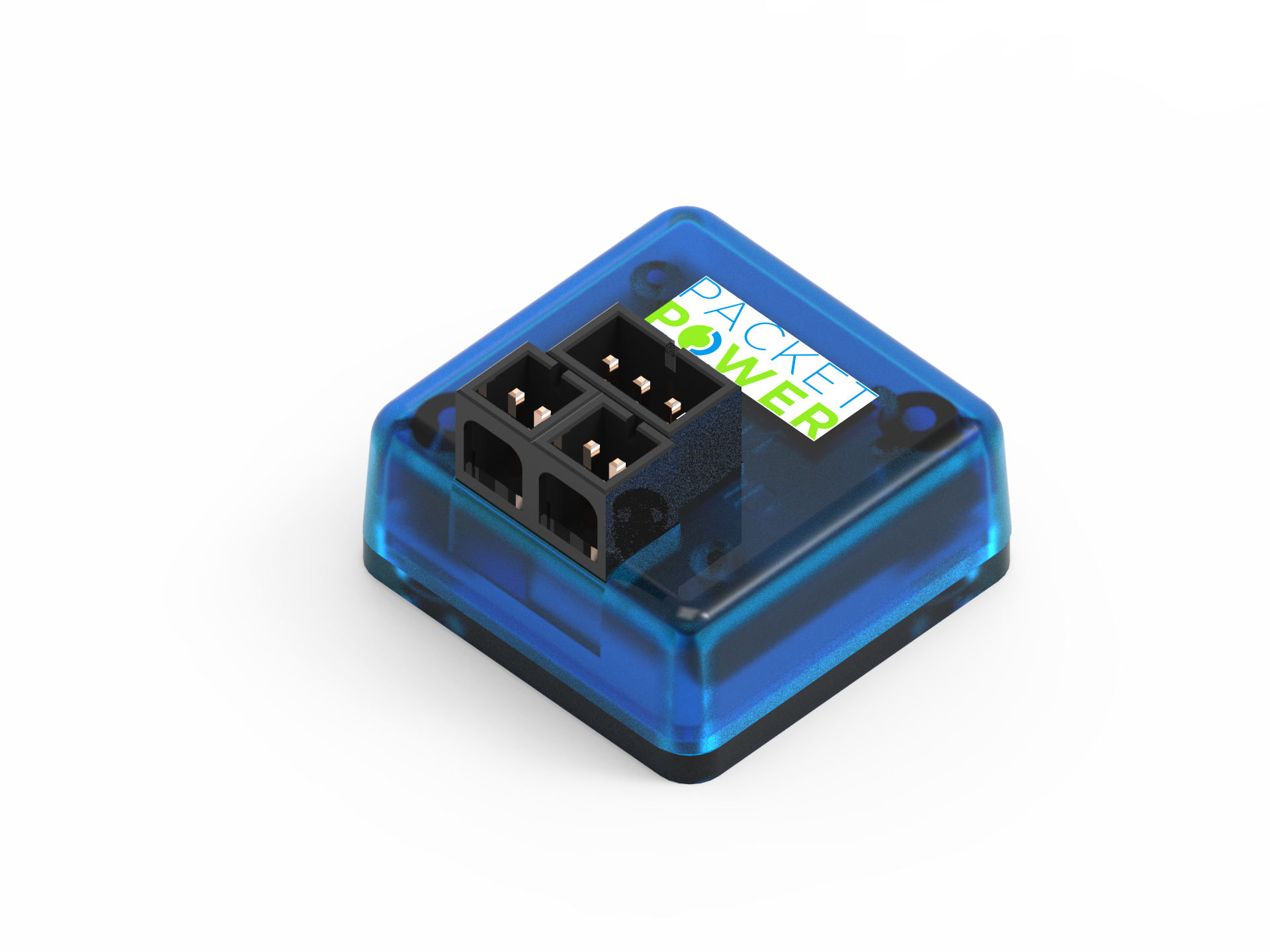What Components Do I Need?
You should have one or more DC Wireless Power Monitors, various interconnect cables, and possibly external Current Transducers (CTs). If you do not already have an Ethernet Gateway, there should be at least one of these as well. Wireless power monitors sense the current and voltage on the DC bus and transmit the data to a Gateway.
There are two types of wireless power monitors:
-
Integrated current transducer versions with integrated solid core current transducers (CTs) for applications of 65A and below.
-
Remote current transducer versions used with remotely connected split core CTs or shunt adapters.


The photos above show a DC Wireless Power Monitor with an integrated CT (on the left) and one for use with a remote CT (on the right).
The power monitors are powered directly from the DC bus. Each monitor can report current (A), voltage (V), power (W) and energy (Wh) for its circuit.
Each monitor requires a connection to voltage from either a Voltage Lead or a Voltage Jumper (used to connect to a nearby monitor that shares the same DC voltage source). If the unit has an external CT, it will have a CT lead, and if it is to be used with a shunt it will have a shunt adapter. Leads and jumpers are available in various lengths.
The following photo illustrates the components in a two-monitor deployment with one voltage lead (on the left) supplying power to the first monitor and a voltage jumper connecting the two monitors to supply the second one. One external CT lead is shown connecting a remote CT to the monitor on the right. A second CT and CT lead would typically be connected to the other monitor.

